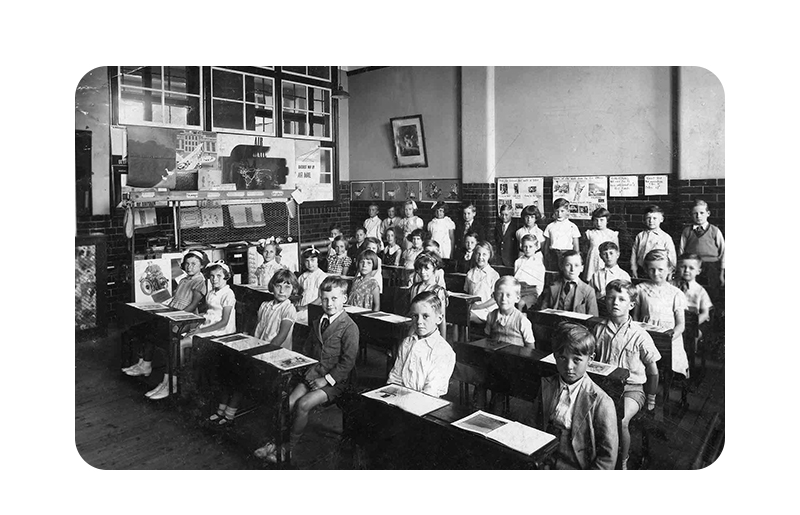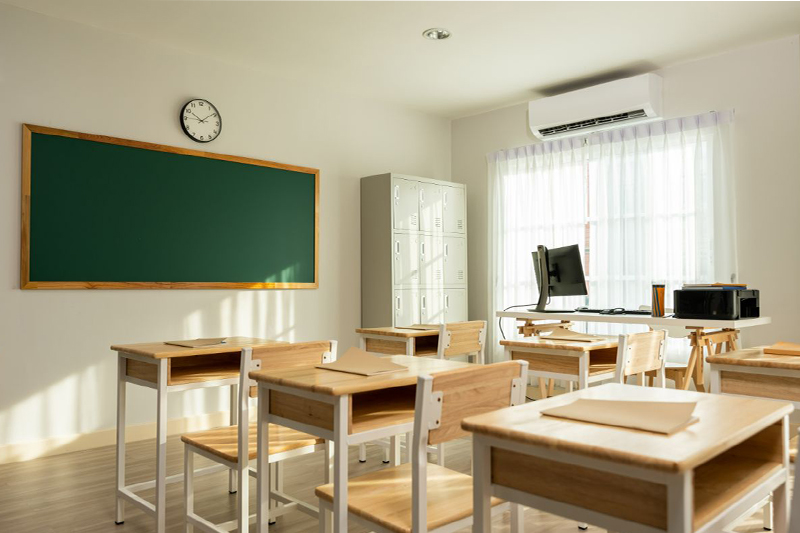
Air conditioning is often celebrated for the comfort it brings to homes and businesses, but one of its most significant impacts can be seen in the realm of education. In the 1950s, the introduction of air conditioning into schools across the United States played a crucial role in transforming the educational landscape. This innovation not only made year-round learning possible but also enhanced student well-being, academic performance, and the overall quality of education.
Before Air Conditioning
Before the advent of air conditioning, schools in hot climates faced significant challenges during the summer months. The stifling heat made it difficult for students to concentrate and for teachers to conduct effective classes. As a result, many schools in warmer regions would close for the summer, limiting educational opportunities and disrupting the learning process.

The Introduction of Air Conditioning
The introduction of air conditioning in the 1950s marked a turning point for schools in hot climates. With the ability to maintain a comfortable indoor temperature, schools could now operate year-round. This allowed for the possibility of extending the school year or offering summer school programs, providing students with more consistent and uninterrupted education.
Expanding Educational Opportunities
Air conditioning made it feasible to build and operate schools in previously inhospitable areas, particularly in the southern states. As a result, educational opportunities expanded, contributing to population growth and economic development in these regions. Families were more willing to move to areas where they could be assured of a comfortable living and learning environment.
Enhancing the Learning Environment
The presence of air conditioning helped reduce heat-related distractions and discomfort, creating a more conducive learning environment. Cooler classrooms likely contributed to better academic performance and overall student well-being. Additionally, air conditioning improved air quality by filtering out pollutants and allergens, which is particularly beneficial for students with respiratory issues. This led to lower absenteeism and better health for both students and staff.
Attracting and Retaining Educators
Air-conditioned schools also became more attractive workplaces, helping to retain and attract educators who might otherwise have sought employment in more temperate climates or in air-conditioned facilities. The improved working conditions contributed to a more stable and dedicated teaching workforce.
Supporting Technological Integration
With air conditioning, schools could integrate more technology into the classroom. Computers, projectors, and other electronic devices generate heat, and air conditioning helps maintain a temperature that prevents these devices from overheating, ensuring they can be used effectively.

The introduction of air conditioning in schools during the 1950s revolutionized education in the United States. By making year-round learning possible, enhancing the learning environment, expanding educational opportunities, and supporting technological integration, air conditioning has had a profound and lasting impact on the educational landscape. As we continue to advance in technology and climate control, we can appreciate how this innovation has shaped and improved the way we educate future generations.

